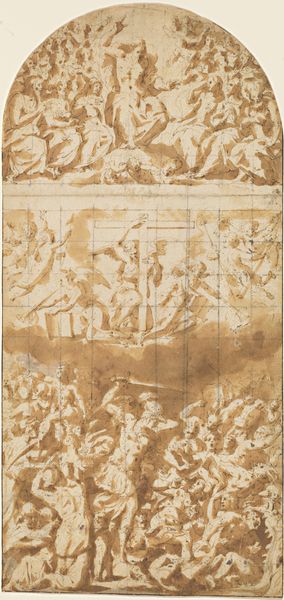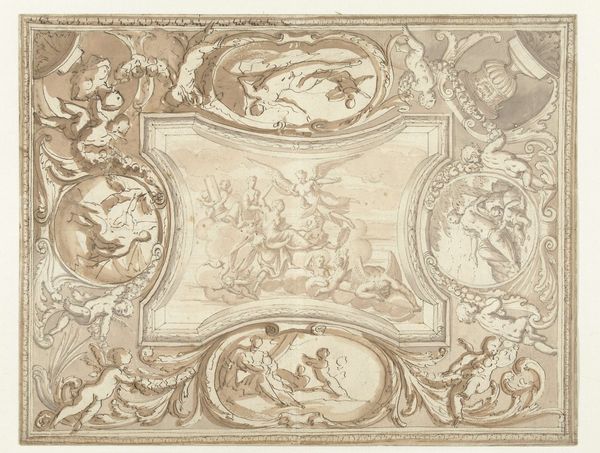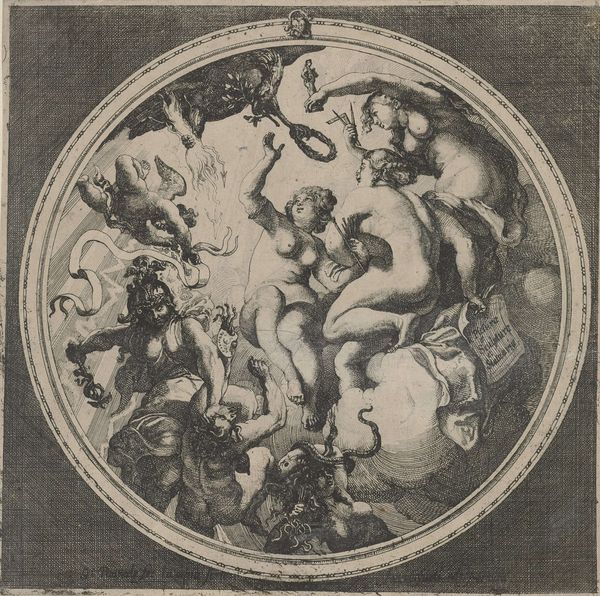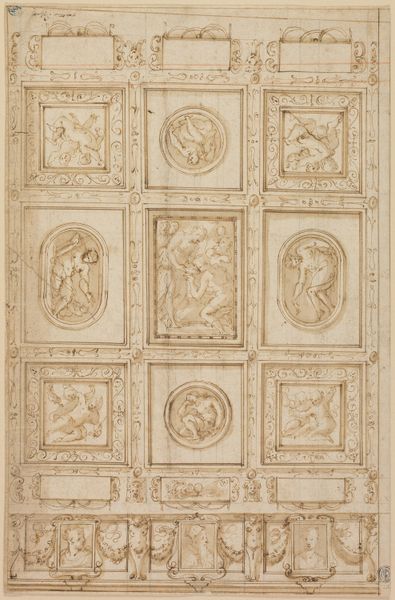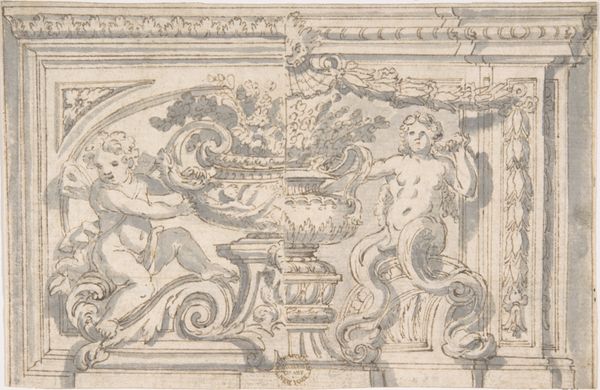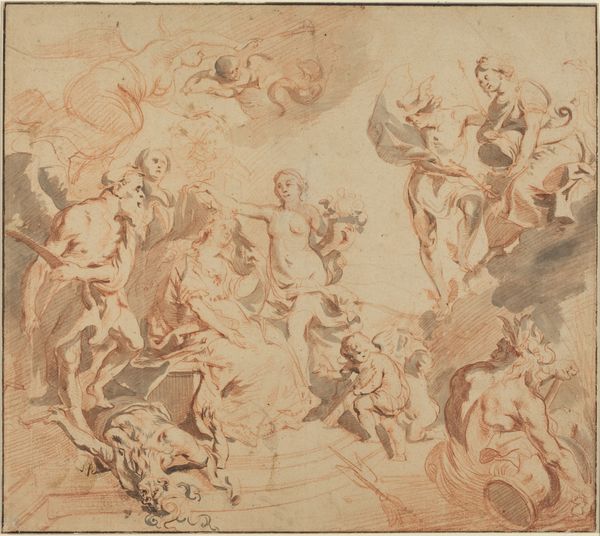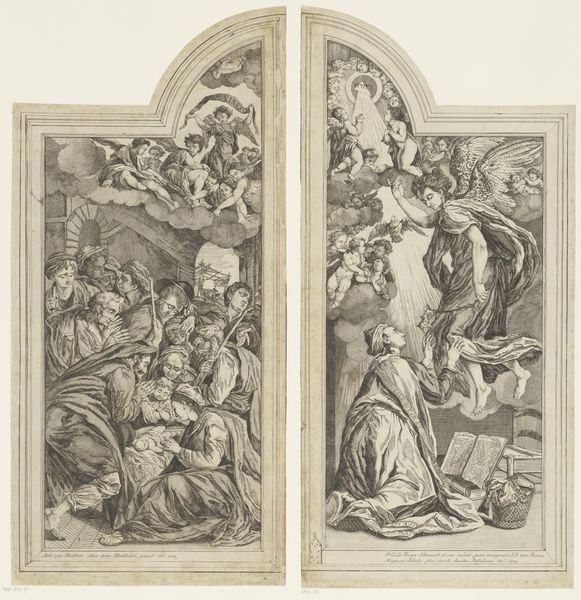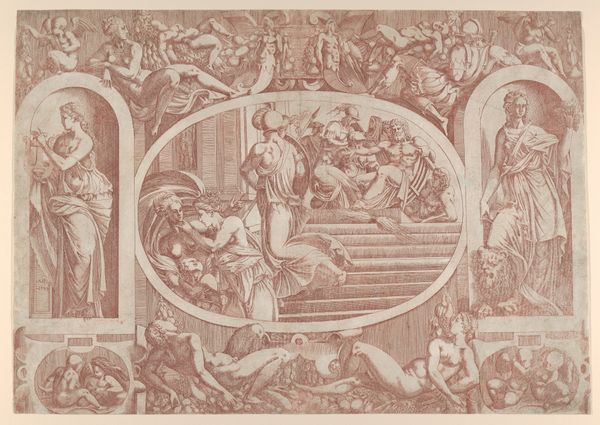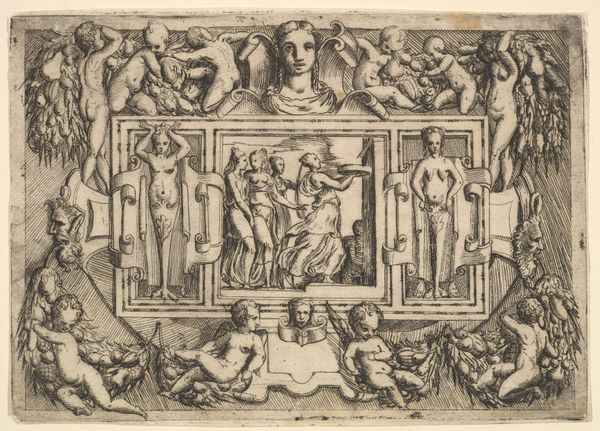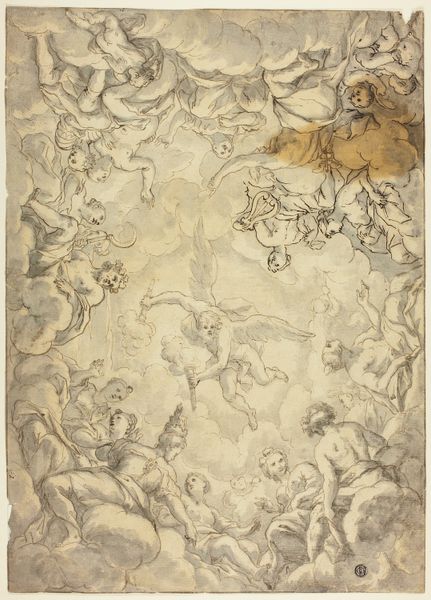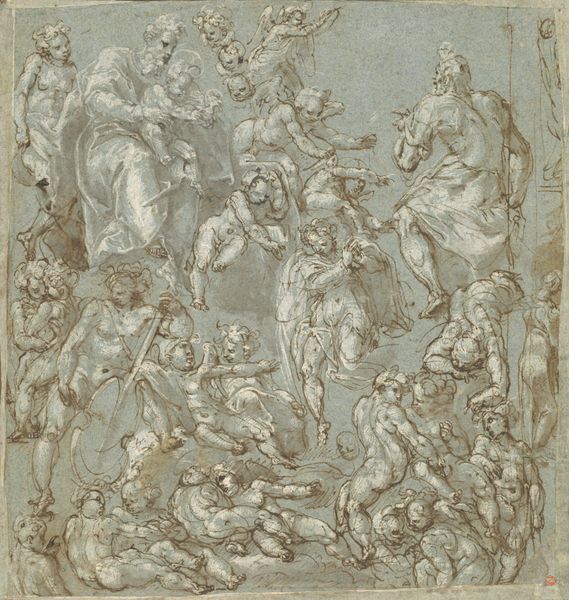
Modello for a Ceiling: Diana and the Dead Endymion, the Judgment of Paris, and the Death of Adonis Possibly 1640 - 1642
0:00
0:00
drawing, paper, ink, pencil
#
drawing
#
allegory
#
baroque
#
classical-realism
#
paper
#
ink
#
pencil
#
history-painting
Dimensions: overall: 32 x 31.5 cm (12 5/8 x 12 3/8 in.)
Copyright: National Gallery of Art: CC0 1.0
Editor: This is Nicolas Poussin's "Modello for a Ceiling: Diana and the Dead Endymion, the Judgment of Paris, and the Death of Adonis," likely created between 1640 and 1642. It's a drawing, done with ink and pencil on paper. It's incredible how he fits three complex scenes into a single composition. I am curious to hear what stands out to you. Curator: Formally, it presents a fascinating study in organization. Poussin compartmentalizes the narrative into distinct registers, doesn't he? This creates a hierarchy within the pictorial space, demanding our eyes move sequentially. What strikes you about the application of line in defining form? Editor: I notice how dynamic the figures appear, even in a static medium like ink. It seems almost like they are fighting for the viewers’ attention as they struggle amongst themselves. What are your thoughts? Curator: Precisely. The dynamism stems from contrasting arrangements, consider the geometric precision of the borders versus the swirling forms of the figures. It highlights the Baroque era's inclination towards highly ornamented subjects. What function does line play in articulating volume and space, given the monochrome palette? Editor: I can see the layers upon layers to create light and shadows using lines that build upon each other to form shapes. The drawing is incredibly balanced. Curator: Indeed, and balance achieved through the visual weight given to the bordering sections of interwoven bodies is something to behold. How the lines converge to define a focal point in each panel. And it is quite remarkable! Editor: It's interesting how this formal analysis directs my viewing of the artwork. Thank you for highlighting aspects I had not thought about. Curator: Likewise. Considering solely the components brings me greater respect for the construction and detail this piece offers!
Comments
No comments
Be the first to comment and join the conversation on the ultimate creative platform.

